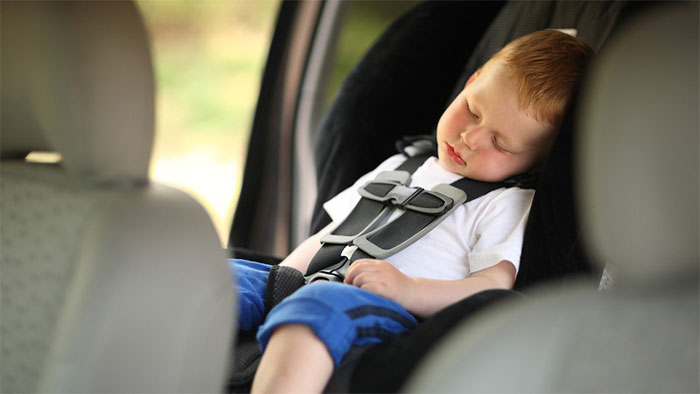How to handle thermal shock in cars
Heat shock is a disease characterized by an increase in body temperature above 40 degrees Celsius, accompanied by neurological dysfunction (consciousness disorders, coma, convulsions). There are two types of classic heat stress and stress heat stress.
Classic thermal shock is common in the elderly, debilitated body, children, people with cardiovascular disease . or by passive exposure to a high-temperature environment for hours, days. Excess heat stroke occurs in young, healthy people, often exposed to elevated environmental temperatures, heat production during exercise and exertion.

Heat shock can cause complications for all body parts such as hypotension, myocardial perforation, pneumonia .
Manifestations of heat shock include body temperature above 40 ° C, hot and dry skin, tiredness, headache, shortness of breath, blushing, vomiting and diarrhea, arrhythmia, hypotension, seizures, kissing anesthesia, liver failure, kidney failure, coagulopathy, rhabdomyolysis . Heat shock can cause complications to all body parts such as hypotension, myocardial perforation, pneumonia, pulmonary edema, renal failure acute, renal tubular necrosis, hypokalemia, hypocalcaemia, hypoglycemia, hemiplegia, coma, jaundice, liver failure .
The ability to save a patient's life depends on the time from the time his body temperature rises until he is treated. If detected early, complete rehydration, active treatment of complications, patients over 90% survive. The condition will worsen when the patient is above 42.2 degrees Celsius, coma, hepatocellular necrosis, coagulopathy, persistent hyperthermia, renal failure, hyperkalemia .
Patients should be treated immediately by hypothermia and support organ function. For external cooling, soaking the patient in ice water can cause peripheral vasoconstriction, chills, hypothermia, and difficulty to monitor vital functions. In addition, ice packs can be placed in the groin, armpits, neck or using a cooling blanket . Therefore, doctors encourage hypothermia for patients with cool water, flush cool water, soak in cool water.
Take the patient to the hospital, which can both transport and hypothermia.
Patients admitted to the hospital will be rehydrated and electrolyzed by cooling as quickly as possible to lower body temperature at a rate of 0.2 degrees C per minute, rectal temperature to 38 degrees C, skin temperature 30-33 degrees C. However, lower temperatures can cause side effects.
Patients will then be stabilized circulatory function, mechanical ventilation when respiratory failure, rehydration under central venous pressure, use blood pressure medications if necessary, avoid stimulant drugs.
Patients with rhabdomyolysis manifest fluid and diuretic compensation. In case of multi-organ failure, dialysis, liver, extra-body circulation must be performed continuously.
- How to deal with "heat shock" - death on a hot day
- Aircondition shock: Dangerous life when driving in the sun
- Thermal shock: Danger of life when riding in a sunny car
- Tips for dealing with
- What is protein thermal shock? Can proteins help us fight cancer?
- New type of shock absorbers are resistant to high temperatures
- How to handle when a car burns
- What to do when a car loses its brakes or loses control?
- How does a thermal camera work?
- The objects in the car are prone to explode when it is sunny and how to handle it
- Safe driving techniques on flooded roads
- Electric cars 1 molecule
- How to handle when the car
- Successfully manufactured the world's first 'thermal energy battery'
 13 causes of non-itchy rash
13 causes of non-itchy rash How the mouse with human ears changed the world?
How the mouse with human ears changed the world? The truth about 'fried rice syndrome!
The truth about 'fried rice syndrome! What is dental implant?
What is dental implant?